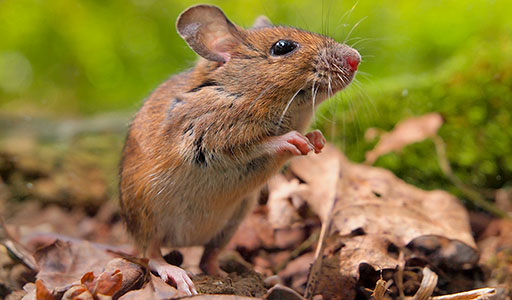Norway Rats

Norway Rat Information
Norway rats, more commonly referred to as sewer rats, are remarkably adaptive foragers. Any promise of abundant food and shelter will quickly draw rats away from their natural habitats of marshes and streams straight into homes and barns, creating a nightmare scenario for farmers and homeowners. Norway rats can cause significant damage to homes and personal property. Their tendency to burrow in walls and under floors can exasperate weak points of buildings and make the foundations unstable. Norway rats are also prone to gnawing, which can cause major structural damage. Perhaps most alarmingly, Norway rats often carry diseases that contaminate the human food they consume; eating this food can cause a person to become incredibly ill.

What does a Norway Rat look like?
Although Norway rats are nocturnal, they may emerge and be spotted during the day if the infestation is large enough. They have coarse fur that is brown, reddish, or gray on their heads and backs, and whitish gray on their bellies. Norway rats are the largest rat species typically seen in U.S. homes, reaching lengths of about seven to ten inches. Though often confused with sleek, agile roof rats, these pests are more full-bodied with blunter snouts.

What does a Norway Rat eat?
Almost any type of food appeals to Norway rats. Their natural diet includes plants, seeds, insects, and small animals. In homes, the pests raid pantries and garbage cans for grains, meat, fish, nuts, and fruit. Although they will eat carrion and rotting food, they prefer fresh items.

Norway Rat habitats
Marshes or fields near ponds and streams are the preferred natural habitats of Norway rats. However, the presence of more abundant shelter, food, and water often draws the pests into homes, yards, canals, barns, and sewers. Norway rats prefer to live in urban environments at low elevations and tend to stick to the ground floors, cellars, or basements of buildings.
Frequently Asked Questions
While often called brown or black rats, these pests can range in color from white to black. There are several more reliable ways to identify them:
- The body of a Norway rat is large and stocky, while that of a roof rat is small and sleek.
- Only roof rats have tails that are longer than their head and body combined.
- Norway rats have a blunt muzzle, whereas roof rats have pointed noses.
- Roof rats’ eyes and ears are comparatively large.
While both pests like to breed and feed indoors, the exact location of this activity is a major difference between a Norway and a roof rat. Norway rats tend to nest on the first floor or in basements. However, they can thrive anywhere people do.
Conversely, roof rats are great climbers and can use their long tails for balance and quick movement. As such, they prefer nesting off the ground, often using trees to enter buildings. Once inside, they may settle in attics, walls, cabinets, and roofs.
Because the pests deposit over 50 pellets a day, feces are usually the first sign of an infestation. However, distinguishing Norway rat poop from other rat and mouse waste is key. The rodents’ droppings are:
- Approximately three-fourths of an inch in length, which is a quarter of an inch more than roof rat pellets
- Shaped like a capsule with blunt ends, whereas roof rat poop is more pointed and slender
- Shiny, black, and almost wet in appearance, though color may vary based on diet
Residents should also take note of the condition of pellets. If droppings are old, dusty, and beginning to crumble, it is likely that the rats have moved on. However, fresh, putty-like feces are a clear indication that rodents are active and near.


